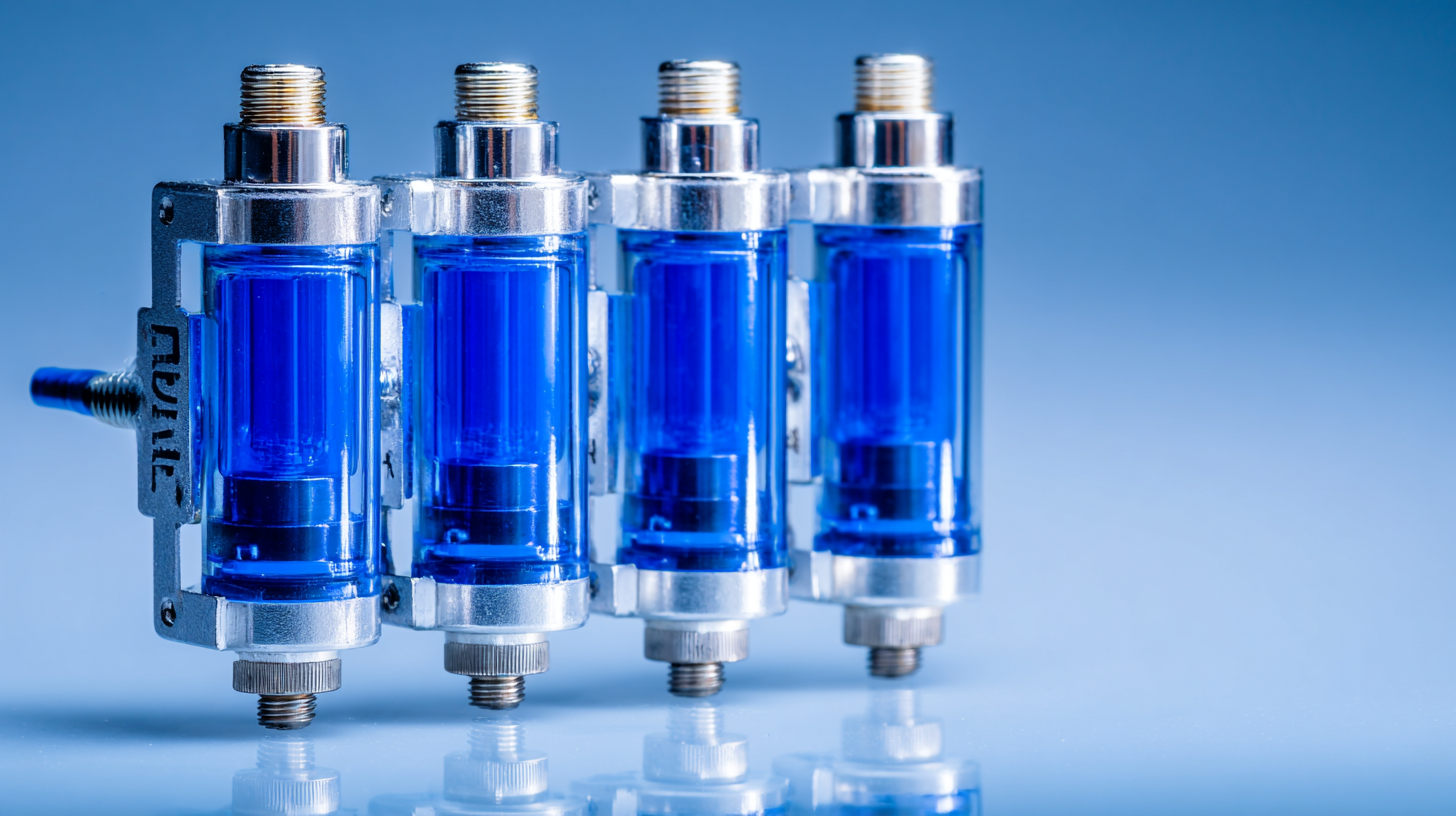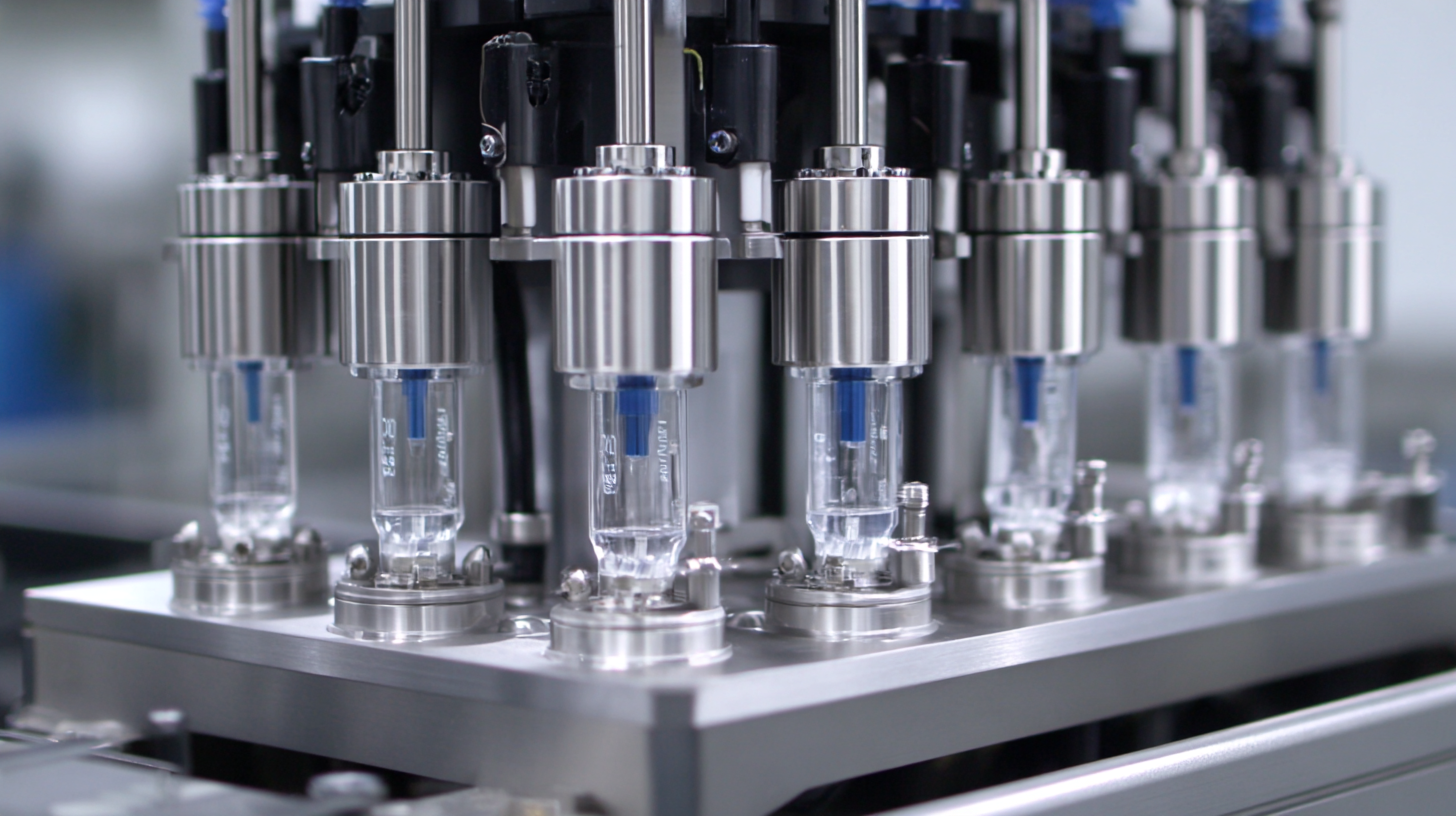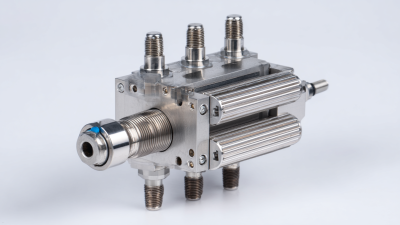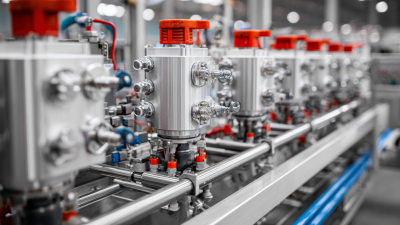In the realm of fluid management, the advent of Mini Max Dosing Pumps is reshaping the landscape of precision dosing and control. These compact, innovative devices are designed to meet the growing demands of various industries, providing an efficient solution for the accurate delivery of liquids. As we delve into the future of fluid control, the emphasis on advanced technological integration, unparalleled efficiency, and user-friendly operation becomes increasingly apparent. Mini Max Dosing Pumps are at the forefront of this revolution, offering enhanced capabilities that cater to specific application needs while reducing operational costs. In the following sections, we will explore the key features, advantages, and future prospects of these cutting-edge dosing pumps, highlighting their role in transforming how industries approach fluid management and control in an increasingly digital world.

Mini Max dosing pumps play a crucial role in the efficient control of fluid transfer, particularly in applications requiring precise and consistent dosing. These pumps are designed to deliver specific volumes of liquid with accuracy, making them essential in industries such as pharmaceuticals, food and beverage, and agriculture. By understanding their function and benefits, users can better appreciate how these pumps contribute to operational efficiency and product quality.
One of the key advantages of Mini Max dosing pumps is their ability to provide control over the flow rate and dosage, ensuring that the right amount of fluid is administered every time. This feature not only minimizes waste but also enhances the overall safety of the processes involved. Additionally, these pumps are often equipped with advanced technology that allows for easy integration with automated systems, further streamlining operations.
Tips: When selecting a Mini Max dosing pump, consider the compatibility with the fluids being handled to prevent material degradation. Regular maintenance checks are also vital to ensure that the pump operates at peak performance and to prolong its lifespan. Keep an eye out for any signs of wear or malfunction to address issues before they escalate.
 The landscape of fluid control technologies is undergoing significant transformation, primarily driven by key innovations that enhance efficiency and accuracy.
Mini Max dosing pumps are at the forefront of this revolution, featuring advanced control algorithms and smart sensors that ensure precise fluid measurements. This level of accuracy is crucial in industries such as
pharmaceuticals, food and beverage, and agriculture, where the slightest deviation can lead to severe consequences.
The integration of real-time data analytics allows operators to monitor and adjust dosing in response to dynamic process conditions, which enhances both product quality and operational efficiency.
The landscape of fluid control technologies is undergoing significant transformation, primarily driven by key innovations that enhance efficiency and accuracy.
Mini Max dosing pumps are at the forefront of this revolution, featuring advanced control algorithms and smart sensors that ensure precise fluid measurements. This level of accuracy is crucial in industries such as
pharmaceuticals, food and beverage, and agriculture, where the slightest deviation can lead to severe consequences.
The integration of real-time data analytics allows operators to monitor and adjust dosing in response to dynamic process conditions, which enhances both product quality and operational efficiency.
Moreover, these pumps are becoming increasingly user-friendly, with intuitive interfaces and connectivity options such as IoT integration. This shift not only simplifies the setup and operation of dosing systems but also facilitates
remote monitoring and maintenance, significantly reducing downtime. Sustainable practices are also a focus, with innovations aimed at minimizing waste and energy consumption,
addressing the growing demand for environmentally responsible technologies. As industries seek to optimize their fluid control systems, the evolution of
Mini Max dosing pumps is set to define the future of fluid management.
Choosing the right Mini Max dosing pump for your application is essential for maximizing efficiency and accuracy in fluid control. According to a recent industry report by Research and Markets, the global dosing pump market is expected to grow at a CAGR of approximately 5.0% from 2023 to 2030. This growth underscores the increasing demand for precise fluid management in sectors such as water treatment, pharmaceuticals, and food processing. Evaluating your specific needs, such as flow rate, pressure, and chemical compatibility, is vital in selecting the appropriate pump model.
 Tips: When considering a Mini Max dosing pump, always look at the pump's flow rate specifications. Ensure it aligns closely with the requirements of your process. Additionally, assessing the material of the pump components is crucial, especially in applications involving corrosive chemicals. Selecting pumps with materials suited for the specific chemicals being dosed can reduce maintenance costs and improve longevity.
Tips: When considering a Mini Max dosing pump, always look at the pump's flow rate specifications. Ensure it aligns closely with the requirements of your process. Additionally, assessing the material of the pump components is crucial, especially in applications involving corrosive chemicals. Selecting pumps with materials suited for the specific chemicals being dosed can reduce maintenance costs and improve longevity.
Another key factor is the pump's control options. Many modern Mini Max dosing pumps offer advanced features such as automated control interfaces and connectivity for remote monitoring. These features not only enhance operational convenience but also provide real-time data monitoring, which can lead to improved decision-making processes in fluid management systems.
Integrating Mini Max dosing pumps into your fluid control systems can significantly enhance overall performance. To achieve optimal results, first, it is essential to assess the compatibility of the dosing pumps with existing system components. This involves evaluating pump capacity, fluid viscosity, and the system's operational pressures. Ensuring that all parts work in harmony will prevent issues such as leaks or pressure drops, which can compromise efficiency.
Additionally, it's important to implement smart monitoring solutions alongside Mini Max dosing pumps. Utilizing sensors and automation technology enables real-time tracking of pump performance and fluid dosage accuracy. This not only streamlines operations but also helps in identifying potential issues before they escalate. Training staff on the proper use and maintenance of these pumps will further optimize their performance, ensuring longevity and reliability in demanding applications. By focusing on these integration strategies, you can maximize the effectiveness of Mini Max dosing pumps in your fluid control systems.
As the demand for precision in fluid control continues to grow, Mini Max dosing pumps are emerging as a key player in revolutionizing how industries manage fluid delivery. According to a recent market report by Research and Markets, the global dosing pump market is projected to reach $5 billion by 2027, showcasing a robust compound annual growth rate (CAGR) of 6.1% from 2021 to 2027. This growth underscores the increasing reliance on innovative dosing technologies in sectors such as water treatment, pharmaceuticals, and food processing.
The future trends in fluid control highlight several advancements. For instance, the integration of smart technology in Mini Max dosing pumps allows for real-time monitoring and automated adjustments, improving efficiency and accuracy. A report by Allied Market Research suggests that the automation segment within the dosing pump industry is likely to exhibit significant expansion, driven by the need for minimizing human errors and enhancing process reliability. Furthermore, the shift towards sustainable practices is pushing manufacturers to develop eco-friendly and energy-efficient models, which are expected to dominate the market landscape in the coming years. With these trends, Mini Max dosing pumps are set to play a crucial role in shaping the future of fluid management solutions.






